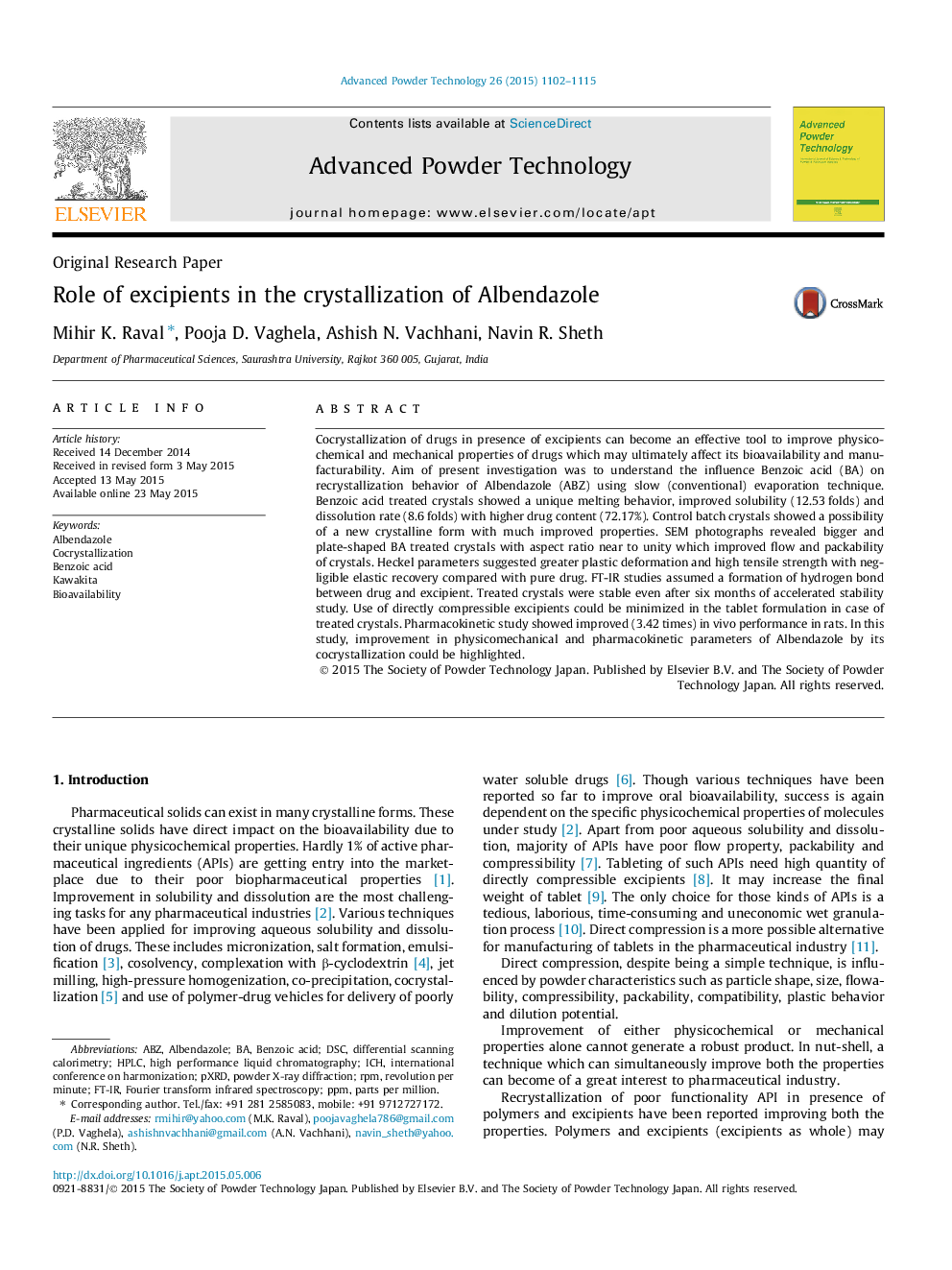| Article ID | Journal | Published Year | Pages | File Type |
|---|---|---|---|---|
| 144348 | Advanced Powder Technology | 2015 | 14 Pages |
•Solubility and dissolution of Albendazole was greatly enhanced.•Benzoic acid generated hydrogen bonding with drug and changed crystal habit.•Flow property and compressibility was significantly improved.•Bioavailability of drug was enhanced by many folds compared to pure drug.
Cocrystallization of drugs in presence of excipients can become an effective tool to improve physicochemical and mechanical properties of drugs which may ultimately affect its bioavailability and manufacturability. Aim of present investigation was to understand the influence Benzoic acid (BA) on recrystallization behavior of Albendazole (ABZ) using slow (conventional) evaporation technique. Benzoic acid treated crystals showed a unique melting behavior, improved solubility (12.53 folds) and dissolution rate (8.6 folds) with higher drug content (72.17%). Control batch crystals showed a possibility of a new crystalline form with much improved properties. SEM photographs revealed bigger and plate-shaped BA treated crystals with aspect ratio near to unity which improved flow and packability of crystals. Heckel parameters suggested greater plastic deformation and high tensile strength with negligible elastic recovery compared with pure drug. FT-IR studies assumed a formation of hydrogen bond between drug and excipient. Treated crystals were stable even after six months of accelerated stability study. Use of directly compressible excipients could be minimized in the tablet formulation in case of treated crystals. Pharmacokinetic study showed improved (3.42 times) in vivo performance in rats. In this study, improvement in physicomechanical and pharmacokinetic parameters of Albendazole by its cocrystallization could be highlighted.
Graphical abstractFigure optionsDownload full-size imageDownload as PowerPoint slide
